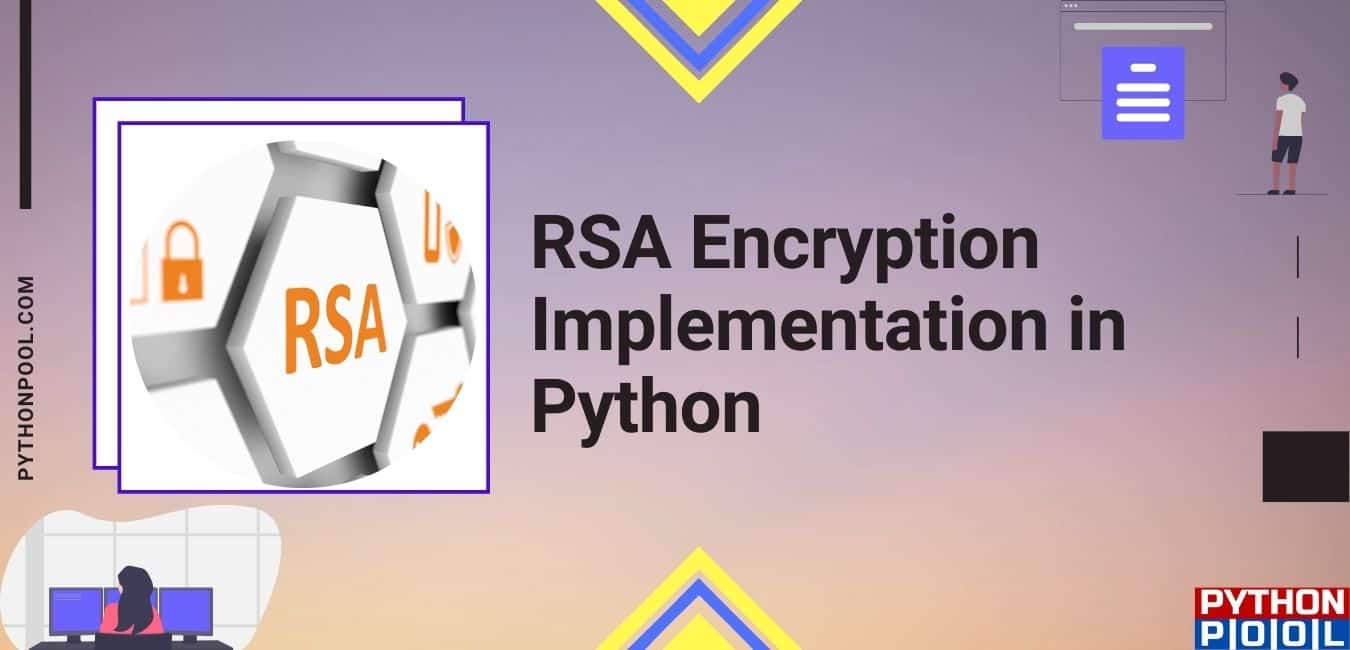In today’s digital landscape, the necessity for data security has never been more pronounced. As individuals and organizations increasingly rely on electronic communication and data storage, the urgency to safeguard sensitive information from prying eyes escalates. One of the most compelling methods to achieve this secure communication is through the implementation of RSA encryption, a widely-used asymmetric cryptographic algorithm. This article serves as a comprehensive introduction to RSA encryption and its implementation in Python, appealing to beginners eager to strengthen their digital fortresses.
To grasp the mechanisms of RSA encryption, it is crucial to understand the fundamental principles of asymmetric cryptography. Unlike symmetric encryption, where a single key is utilized for both encryption and decryption, asymmetric encryption employs a dual-key system. This system consists of a public key, which is available to anyone wishing to send encrypted messages, and a private key, known only to the recipient. The elegance of RSA lies in its mathematical foundation, specifically its reliance on the factorization of large prime numbers.
The RSA algorithm operates through several stages: key generation, encryption, and decryption. Initially, two distinct prime numbers, (p) and (q), are chosen. These primes are multiplied to yield (n = p times q), which forms part of the public key. The totient, denoted as (phi(n) = (p-1)(q-1)), is subsequently calculated, serving as a pivotal element in determining the encryption exponent (e). The value of (e) must be coprime to (phi(n)) and typically takes on a common value such as 65537 for efficiency.
With (n) and (e) established, the public key becomes ( (n, e) ). The private key, on the other hand, is calculated through the modular multiplicative inverse of (e) mod (phi(n)), often denoted as (d). Thus, the private key is represented as ( (n, d) ). The entire process underscores the allure of RSA encryption; its security is rooted in the complexity of prime factorization, a task that remains computationally challenging for large numbers.
Transitioning from theory to practice, implementing RSA encryption in Python can be accomplished with relative ease. The popular library `PyCryptodome` provides a robust foundation for performing cryptographic functions. To commence, initial setups require the installation of the library via pip, ensuring that the environment is primed for cryptographic operations:
pip install pycryptodomeThe next step involves generating keys. A succinct Python script can accomplish this with clarity. The code snippet below illustrates the process of creating a public and private key pair:
from Crypto.PublicKey import RSA
# Generate RSA Key Pair
key = RSA.generate(2048)
# Export the public and private keys
private_key = key.export_key()
public_key = key.publickey().export_key()
with open('private.pem', 'wb') as f:
f.write(private_key)
with open('public.pem', 'wb') as f:
f.write(public_key)In this script, a 2048-bit RSA key is generated, adhering to contemporary security standards. The resultant keys are saved to the file system for future use. This step is fundamental; the keys serve as the cornerstone of data encryption and decryption.
Upon successful key generation, one can proceed to the encryption phase. The subsequent section of the code demonstrates how to encrypt a message using the public key:
from Crypto.Cipher import PKCS1_OAEP
from Crypto.PublicKey import RSA
from Crypto.Random import get_random_bytes
# Load the public key
with open('public.pem', 'rb') as f:
public_key = RSA.import_key(f.read())
cipher = PKCS1_OAEP.new(public_key)
message = b'This is a secure message.'
ciphertext = cipher.encrypt(message)
print(f"Encrypted Message: {ciphertext.hex()}")This code employs the PKCS1_OAEP cipher, a padding scheme that enhances security against certain attacks. Upon execution, the message is transformed into an inseparable string of bytes, only decipherable with the corresponding private key. This transformation underscores RSA’s capacity to preserve confidentiality in digital communications.
Encryption is only one half of the cryptographic equation; decryption is equally paramount. Retrieving the original message from the encrypted data entails utilizing the private key. The following code performs this critical function:
from Crypto.Cipher import PKCS1_OAEP
from Crypto.PublicKey import RSA
# Load the private key
with open('private.pem', 'rb') as f:
private_key = RSA.import_key(f.read())
cipher = PKCS1_OAEP.new(private_key)
decrypted_message = cipher.decrypt(ciphertext)
print(f"Decrypted Message: {decrypted_message.decode()}")This final segment of the code successfully restores the original plaintext from the ciphertext. The RSA algorithm’s strength becomes evident at this juncture; it facilitates secure communication that insulates sensitive data from unauthorized access.
While RSA encryption offers robust security, it is not without limitations. The key sizes involved must remain sufficiently large to thwart brute-force attacks, generally recommending a minimum of 2048 bits. Furthermore, the algorithm’s performance can diminish with larger keys, necessitating a balance between security and efficiency.
In summation, RSA encryption implemented in Python provides a formidable defense against data breaches and unauthorized access. Through its ingenious use of mathematical principles and the simplicity of Python, individuals gain access to powerful tools for secure communication. As digital interactions burgeon, understanding and implementing encryption methods like RSA become indispensable. The steps outlined herein serve as a foundational guide for those venturing into the complex yet vital realm of cryptography.








Leave a Comment